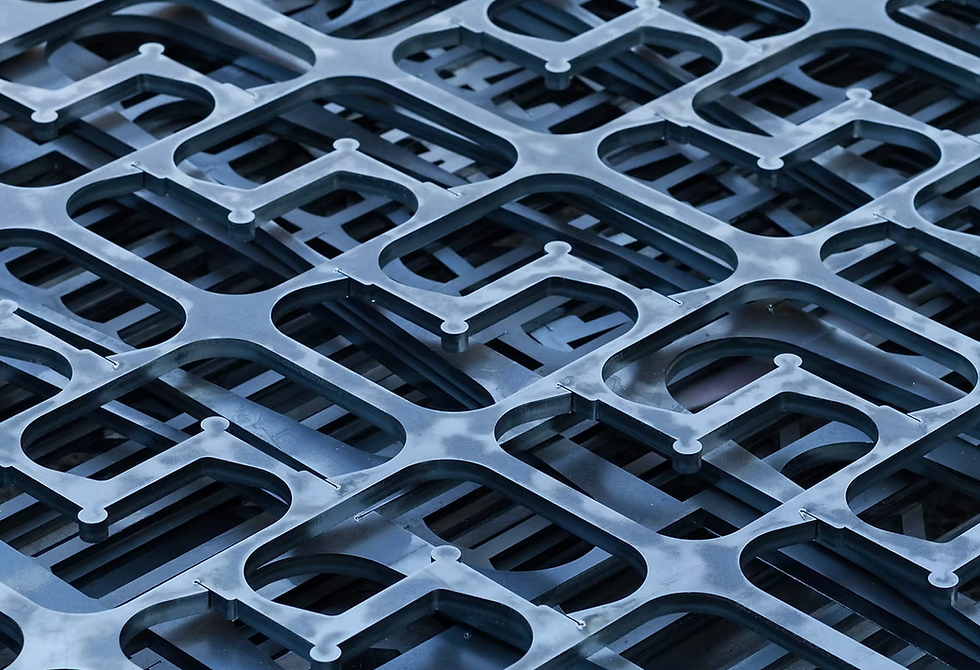Forging a Greener Future: The UK's Green Steel Ambitions Amid Global Trade Shifts
- Eric Lewis
- May 14
- 3 min read
As the UK navigates its path toward net-zero emissions, the steel industry stands at a pivotal crossroads. Recent developments, including the government's intervention in British Steel and a landmark trade agreement with the United States, have opened new avenues—and posed fresh challenges—for the nation's green steel aspirations.

A Strategic Shift: Government Intervention in British Steel
In April 2025, the UK government enacted the Steel Industry (Special Measures) Act to prevent the closure of British Steel's Scunthorpe plant, home to the country's last two blast furnaces. This emergency legislation granted the Secretary of State for Business and Trade powers to direct the operations of steel manufacturers, ensuring the continued operation of critical assets in the public interest.
The intervention followed the Chinese-owned Jingye Group's decision to cease operations at Scunthorpe, citing financial losses. The government's move not only preserved thousands of jobs but also underscored the strategic importance of maintaining domestic steel production capabilities.
Trade Winds: The UK-US Steel Agreement
Simultaneously, the UK secured a trade deal with the United States, effectively eliminating the 25% tariff on British steel exports imposed under Section 232. This agreement offers a lifeline to UK steel producers, enhancing their competitiveness in the US market.
However, the deal includes stringent conditions regarding the ownership and operation of British steel plants, aimed at excluding Chinese involvement in the supply chain. These stipulations have drawn criticism from China, which views them as discriminatory and a potential threat to UK-China trade relations.
Green Steel: The Path Forward
The convergence of government intervention and favourable trade terms presents an opportunity for the UK to pivot toward sustainable steel production. Transitioning to green steel—produced using low-carbon methods such as electric arc furnaces (EAFs) powered by renewable energy—aligns with the UK's broader climate goals.
British Steel had previously announced plans to replace its traditional blast furnaces with EAFs at Scunthorpe and Teesside, aiming to reduce carbon emissions and modernise operations. While the Teesside project has been shelved, the Scunthorpe EAF received planning permission in April 2024, signaling a commitment to greener practices.
Moreover, the UK government's "Plan for Steel" outlines a £2.5 billion investment to support the sector's transition to sustainable production methods, including the adoption of hydrogen-based technologies and the development of a circular economy for steel.
Challenges and Considerations
Despite these advancements, several challenges persist. The high cost of transitioning to green steel production, estimated at £1.25 billion for British Steel's plans, requires substantial investment and government support. Additionally, the industry's reliance on affordable energy sources and the need for a skilled workforce to manage new technologies are critical factors in the successful implementation of green steel initiatives.
Furthermore, the geopolitical implications of trade agreements and ownership restrictions necessitate a careful balancing act to maintain international partnerships while advancing domestic sustainability goals.
European Benchmarks: Learning from Continental Leaders
The UK's green steel ambitions can draw valuable insights from pioneering projects across Europe:
Stegra (formerly H2 Green Steel) – Boden, Sweden: Aiming to produce 5 million tonnes of green steel annually by 2030 using renewable energy and green hydrogen.
Hydnum Steel – Puertollano, Spain: Developing a €1.65 billion plant expected to reduce CO₂ emissions by 98% through renewable energy and green hydrogen.
Thyssenkrupp Steel – Duisburg, Germany: Investing approximately €3 billion to replace traditional blast furnaces with hydrogen-ready facilities, targeting significant CO₂ emission reductions.
Tata Steel – IJmuiden, Netherlands: Transitioning to hydrogen-based direct reduced iron (DRI) technology and electric arc furnaces (EAFs) to align with climate goals.
ArcelorMittal – Dunkirk, France: Planning a €1.7 billion investment to install DRI units and EAFs, aiming to reduce CO₂ emissions by up to 4 million tonnes annually.
These projects exemplify the integration of renewable energy and innovative technologies in steel production, offering models for the UK's transition to green steel.
Conclusion
The UK's steel industry stands at a transformative juncture, with the potential to lead in green steel production. Government intervention and strategic trade agreements have laid the groundwork for this transition, but realising the vision of a sustainable steel sector will require continued investment, innovation, and collaboration across public and private sectors.





